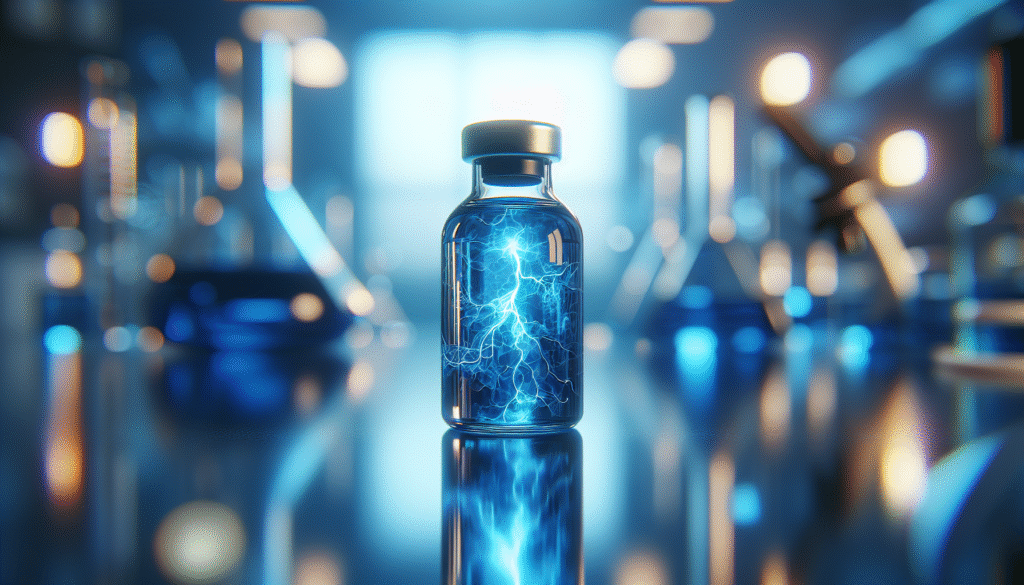
What if a single compound could transform various fields within biotechnology? This is not just a thought experiment; it reflects the multifaceted applications of methylene blue, a compound historically associated with a range of medical and scientific uses. Understanding methylene blue’s properties, reactions, and applications can inform your approach to biotechnology and its role in advancements across various sectors.
Understanding Methylene Blue
Methylene blue is a synthetic compound that has been utilized since the 19th century. Known for its vivid blue color, it carries the chemical formula C16H18ClN3S. Initially developed as a dye, its applications span diagnosis and treatment in medical science, as well as innovative uses in biotechnology.
Historical Perspective
The journey of methylene blue began in 1876, primarily as a dye during the textile manufacturing process. However, its medical applications soon came to light, with notable uses in treating conditions like malaria and certain methemoglobinemia. Over the decades, research has unveiled its potential beyond the medical realm, allowing you to see its versatility across various industries.
Chemical Properties
Methylene blue exhibits distinct properties that make it valuable. Its solubility in water allows it to mix easily in laboratory settings. Further, its redox properties enable it to act as an electron donor, facilitating reactions essential in biochemical processes.
Mechanisms of Action
Understanding methylene blue’s mechanisms of action is vital for its applications in biotechnology. Its role as a reducing agent means it can inhibit certain enzymatic pathways, which is especially helpful in studies surrounding oxidative stress and cellular metabolism. This property allows for innovative applications in biosensors and therapeutic interventions.
Applications in Medicine
As you explore methylene blue’s applications, it is essential to acknowledge its robust presence in medical settings. Its roles range from diagnostic uses to therapeutic interventions.
Diagnosis and Imaging
One of the more remarkable abilities of methylene blue is its capability to enhance imaging processes. It is often employed as a stain in surgical procedures to help delineate certain anatomical structures. This application ensures precision during surgeries by providing clearer visualization.
Moreover, it is utilized in conjunction with imaging modalities to enhance the contrast of certain tissues, facilitating better diagnostic outcomes in radiological assessments.
Antimicrobial Properties
Methylene blue possesses inherent antimicrobial characteristics. This applies both to bacteria and certain viruses, making it a valuable compound in developing new antimicrobial agents. For your work in biotechnology, the potential for methylene blue to serve as a prototype for more effective antimicrobial treatments is crucial, especially in our fight against antibiotic resistance.
Treatment of Methemoglobinemia
In cases of methemoglobinemia, a condition resulting in reduced capacity of hemoglobin to carry oxygen, methylene blue acts as an antidote. It catalyzes the conversion of methemoglobin back to hemoglobin, thus revitalizing patients. Understanding this therapeutic application highlights the immediate impact this compound can have in critical medical scenarios.

Environmental Biotechnology
Methylene blue’s applications extend into environmental biotechnology, where its properties can aid in pollution control and waste management.
Wastewater Treatment
You may find it interesting that methylene blue plays a significant role in wastewater treatment. It is effective in degrading organic pollutants, and its use can enhance the efficiency of bioremediation processes. Using methylene blue in these contexts can lead to more sustainable practices in environmental health and safety.
Phytoremediation
Phytoremediation involves using plants to absorb contaminants from soil and water. Methylene blue can facilitate the growth of plants in contaminated environments, enabling their efficiency in removing heavy metals and dyes from ecosystems. Your understanding of these processes can contribute to new strategies in environmental restoration.
Biotechnological Innovations
Methylene blue’s applications in biotechnology are vast, influencing diagnosis, research, and therapeutic development.
Biosensors
In the rapidly evolving field of biosensors, methylene blue has emerged as a significant player. Its electrochemical properties allow it to function as a redox mediator in sensor designs, enhancing their sensitivity and specificity. Such applications could be pivotal in health diagnostics, allowing for quicker and more reliable readings.
Photodynamic Therapy
The advent of photodynamic therapy (PDT) has opened new avenues for treating various conditions, including cancer. Methylene blue serves as a photosensitizer, absorbing light and subsequently generating reactive oxygen species that can kill cancer cells. Your engagement with this technology can help further its development and application in clinical settings.
Gene Delivery Systems
Gene therapy represents a frontier in treating genetic diseases, and methylene blue has garnered attention for its potential in gene delivery systems. It can facilitate the transport of genetic material into cells, assisting in the development of novel therapeutic strategies. Being well-versed in these techniques could enhance your contributions to biotechnology research.

Challenges and Considerations
Despite its myriad applications, working with methylene blue also poses unique challenges. Understanding these challenges is essential for innovating responsibly within biotechnology.
Toxicity Concerns
One area that warrants attention is the toxicity associated with methylene blue. Excessive doses can lead to adverse effects in humans, including serotonin syndrome and hemolytic anemia. A prudent approach to its application is crucial, requiring careful monitoring and dosing in therapeutic settings.
Regulatory Issues
Navigating the regulatory landscape can be a daunting task, especially when incorporating methylene blue into new treatments or technologies. Each country possesses different regulations. Being nuanced in your understanding will facilitate greater compliance as you work on innovative projects.
Future Directions
The trajectory of methylene blue’s applications appears promising as ongoing research continues to unveil new possibilities.
Advances in Research
Innovations in molecular biology and nanotechnology may enhance our understanding of methylene blue’s interactions and expand its applications in drug delivery systems and therapeutics. Keeping abreast of such developments might inspire you to embark on new ventures within biotechnology.
Sustainable Practices
As environmental concerns grow, the use of methylene blue in bioremediation and other sustainable practices could ramp up. You have an incredible opportunity to position yourself as a leader in this essential aspect of biotechnology, contributing to a healthier planet.
Conclusion
Methylene blue stands as an emblem of versatility and innovation within the realm of biotechnology. Its broad spectrum of applications, from medical diagnostics to environmental remediation, showcases the compound’s potential. As you continue to work with this remarkable agent, an understanding of its multifaceted properties and applications can guide you in navigating the challenges and seizing the opportunities that lie ahead. Your efforts can contribute significantly to the ever-evolving landscape of biotechnology, fostering a legacy of advancement and discovery.
Consider incorporating methylene blue into your research and ventures. Not only does it have a rich history, but it also holds potential for the future that aligns with your goals and aspirations in this dynamic field. The more you glean insights into its applications, the better equipped you are to unlock its full potential in your endeavors.